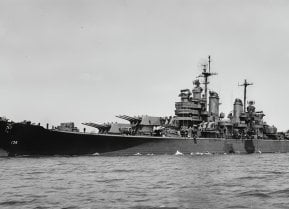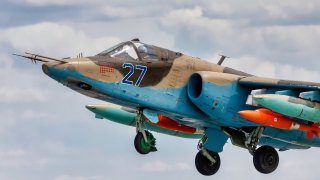Sukhoi Su-25 Frogfoot: Russia's Powerhouse Answer to the A-10 Warthog
Though the Su-25 Frogfoot/Grach is a respectable warbird, most military experts and warfighters would rather be flying the A-10 Warthog if given a choice.
Through the years, NATO has frequently come up with some rather interesting codenames for former Soviet/Russian-designed aircraft. For example, you have the MiG-15, the MiG-21 "Fishbed, and the Su-57 "Felon." In the case of the Su-25 Frogfoot, whilst actual flesh-and-blood frogs kill more than their fair share of flies and other insects, they're generally not intimidating or deadly to humans.
A notable exception is the poison dart frog family of Central America. The poison secreted by the skin of these amphibians is so deadly to the touch—a mere 1/100,000 of an ounce can potentially kill a human—that Native Americans make use of the animals' toxic secretions to poison the tips of blow darts (hence the name of the species). So then, if you think of the Su-25 as being more analogous to that particular frog family, then you can better appreciate the warplane as a truly frighteningly fatal flying Frogfoot. (Hey, didya like that alliteration?)
For the record, the actual Russian name for the warbird (yes, I'm mixing my avian and amphibian metaphors here) is Grach, which translates to "rook,"a species of bird (scientific name Corvus frugilegus) that bears a passing resemblance to a crow and lives in Scandinavia, Western Europe, and eastern Siberia. The mechanical Grach made her maiden flight on 22 February 1975 and went into series production in 1978 in Tbilisi in then-Georgian Soviet Socialist Republic (rather ironic in light of the status of post-Cold War Russo-Georgian relations). Official adoption into Soviet military service took place on 19 July 1981, and from there, the Frogfoot wasted no time getting its proverbial feet wet (hey, c'mon now, frogs spend a lot of time in water, n'est-ce pas?) in combat.
The plane saw heavy action in the 1980s during the Soviet-Afghan War, flying over 60,000 counter-insurgency sorties against the Mujahideen. The Su-25 also saw some usage during that same decade by Saddam Hussein's air force during the Iran-Iraq War, although just how much actual combat usage of the platform took place during this particular war is a matter of some speculation.
Shortly after gaining its independence via the collapse of the Soviet Union, Georgia's Air Force used the Frogfoot during the 1992-1993 Abkhazia War,..and then—as alluded to in the previous paragraph—found itself on both the giving and receiving end of the Su-25's wrath during the 2008 South Ossetia War. Most recently, of course, Frogfoots—or would that be Frogfeet(?)—have been used on both sides of the currently raging Russo-Ukrainian conflict (more on this shortly).
Head-to-Head Against the Warthog?
"So then," our readers are probably asking, "how exactly does the Frogfoot stack up against the Warthog?"
Great question, I'm glad y'all asked, and I'll let author Alex Betley provide at least a partial answer:
"It is a bit smaller, lighter and speedier than the A-10, and is powered by dual R-195 turbojet engines.…Despite its popularity, however, the Frogfoot has had its image tarnished by its shortcomings. Compared to the Warthog, the Frogfoot has a shorter range and loiter time (loiter time being of immense consequence in running CAS missions), can operate at only half the altitude, and can carry only half the load of munitions that the Warthog can carry. In addition, the Warthog usually carries precision-guided munitions such as the Maverick antitank missile and its GAU-8 cannon is still larger and more effective than the Frogfoot’s gun..Moreover, despite being a 'flying tank,' the Frogfoot has shown to be particularly vulnerable to shoulder-launched surface-to-air missiles (SAMs)…Most recently in Ukraine, both Ukrainians and Russians have lost more Frogfoots than any other aircraft."
From a strategic and propagandistic standpoint, the most significant shootdown of a Su-25 took place on or about 24 May 2022, when the Ukrainian 80th Air Assault Brigade used a 9k38 Igla (“needle”) MANPAD to shoot down a Grach piloted by Major General Kanamat Botashev.
Botashev was KIA, thus making him the highest-ranking Russian pilot killed in the war, yet another one in a series of Russian generals killed in Putin's "special military operation."
Though designed as a tank-buster just like the A-10, I've yet to come across any specific reports of Su-25s scoring actual tank kills.
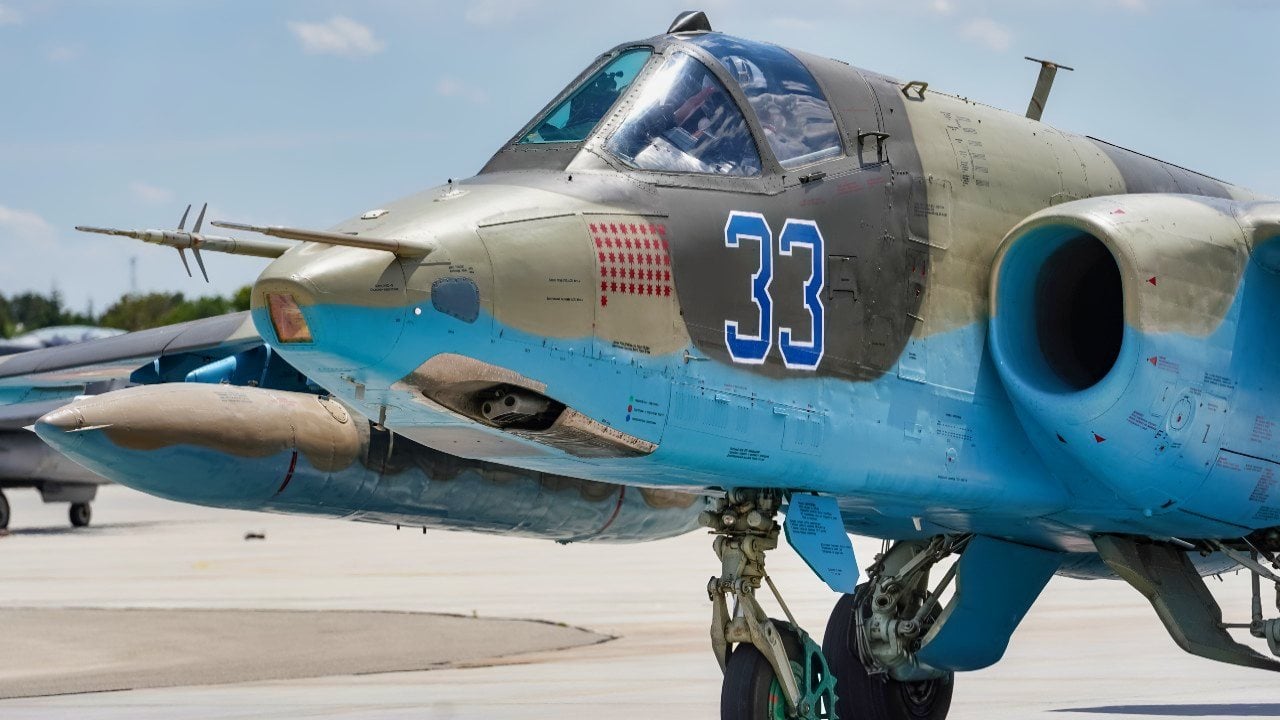
By contrast, the Warthog is known to have set a record of sorts wherein two of its pilots killed 23 Iraqi main battle tanks in a single day, part of the 900 total MBTs that the American plane would destroy during Operation Desert Storm.
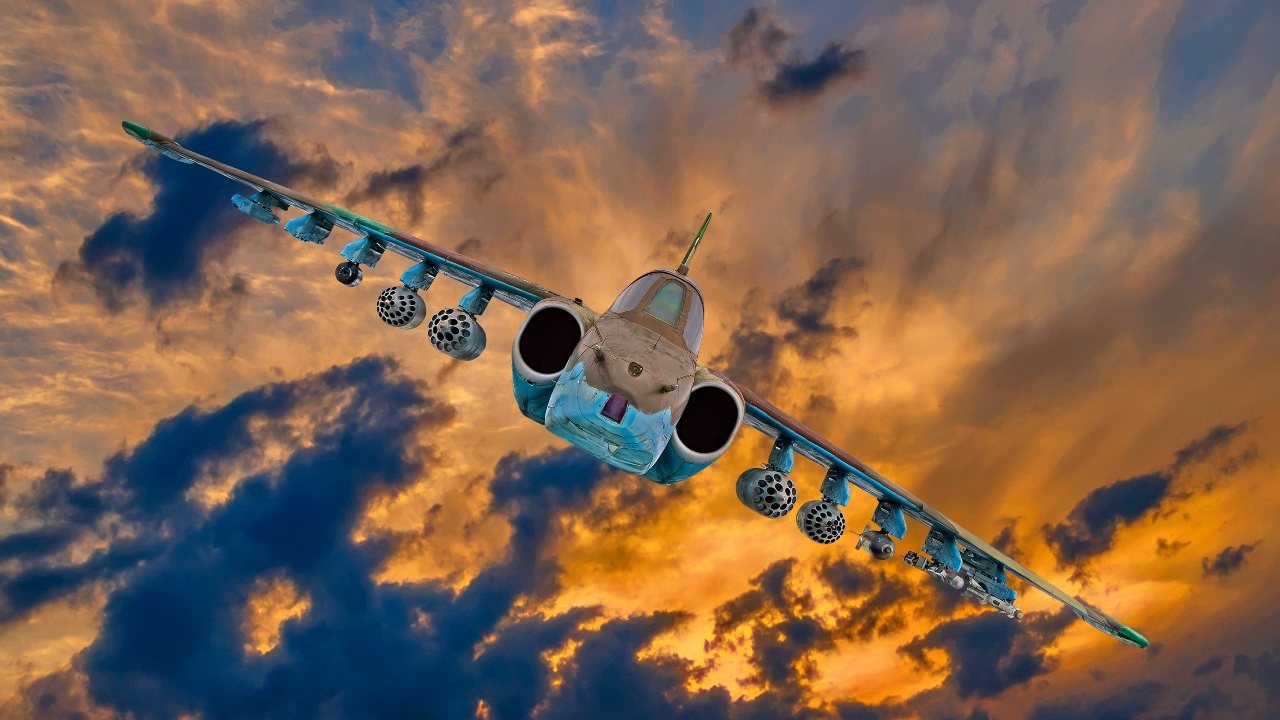
Another bragging right the Warthog has that the Frogfoot doesn't—at least as far as I know—is that of an air-to-air kill, the downing of an Iraqi helicopter during that same Gulf War, which also holds its place in history as the last known gun kill by a combat jet.
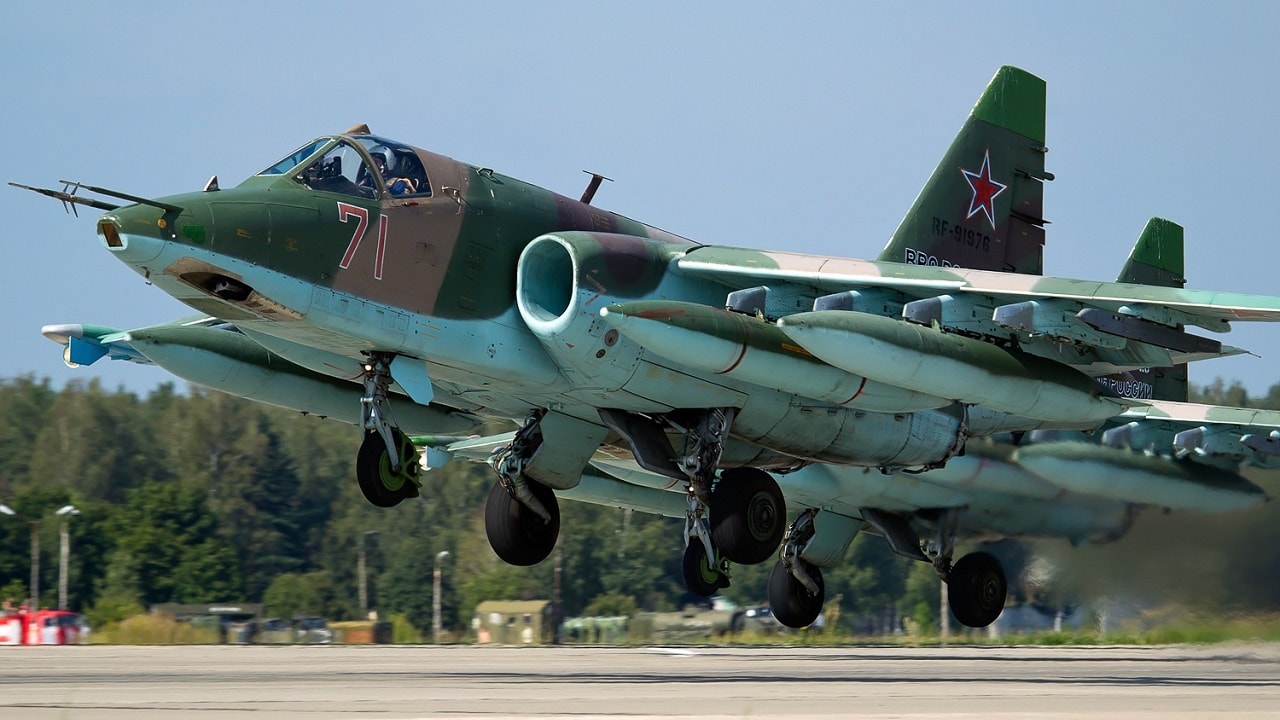
Long story short, though the Su-25 Frogfoot/Grach is a very respectable warbird, I'll still take the A-10 Warthog over it any ol' day of the week and twice on Sundays.
About the Author
Christian D. Orr is a former Air Force officer, Federal law enforcement officer, and private military contractor (with assignments worked in Iraq, the United Arab Emirates, Kosovo, Japan, Germany, and the Pentagon). Chris holds a B.A. in International Relations from the University of Southern California (USC) and an M.A. in Intelligence Studies (concentration in Terrorism Studies) from American Military University (AMU). He has also been published in The Daily Torch and The Journal of Intelligence and Cyber Security. Last but not least, he is a Companion of the Order of the Naval Order of the United States (NOUS).
Image are sourced from Shutterstock and Creative Commons.
